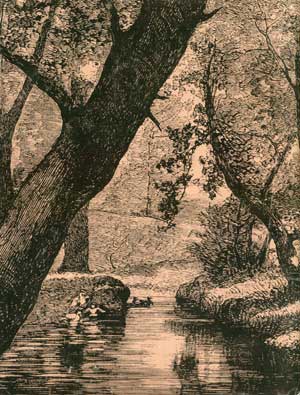|
Centennial Mini-Histories of the Forest Service
|

|
INTRODUCTION
This collection of essays on the origins and evolution of the conservation movement and the National Forest System began in 1987, the year I arrived in Washington, DC, to labor as historian of the USDA Forest Service. A primary duty of this job is answering queries from the public and employees on the history of the Forest Service or some aspect of the National Forest System: When did the agency start? Who was the first leader ("chief")? Why does the Nation have national forests, what is their purpose, and future? Frankly, it became irritating to respond to these basic questions time after time, because I had to prepare anew a packet to mail out with each separate request for information. Yet, I did just that until the need to write one became imperative. What sparked me was a conversation in a bar in Montana.
In 1988, I was interviewing a Forest Service employee in Bozeman about public perception of the agency. In her response, she happened to say that local feeling about Forest Service land-use practices was so hostile that many employees were wary of mentioning to strangers in bars that they worked for the agency. Right then I thought of writing a debate manual for employees. Whenever someone began to deride them for alleged faults of the agency, after consulting the booklet instead of shrinking off in shame, they could respond with the proud account of its many accomplishments, such as developing the concept of wilderness recreation and areas. But I still didn't get around to it despite the need to educate our own people on the legacy of Bob Marshall and Aldo Leopold. It took a birthday for me to act.
That birthday was the Centennial Celebration of the Federal Forest Reserve Act of 1891, which established the land base for what became the National Forest System. I mentioned to Robert Hendricks, the Centennial Coordinator, the idea of writing a series of short thematic essays for use in agency internal newsletters on the history of the agency. He liked the proposal and suggested that this series focus on the birth of the National Forest System. This I did in the first 12 mini-histories. The latter 12 went on to cover some of the highlights in the administrative history of the Forest Service, the agency in the Department of Agriculture that since 1905 has had the responsibility for managing the national forests and grasslands for the American people. In this book we have now collected all 24 mini-histories. Reading them could surprise you and surely should inform you, and help you to feel pride in our agency's history of accomplishments.
Terry L. West, Ph.D.
Forest Service History Unit
Washington, DC

| <<< Previous | <<< Contents>>> | Next >>> |
|
FS-518/intro.htm Last Updated: 19-Mar-2008 |